The Favre Leuba Sea Sky Revival is (almost) the Real Vintage Deal
Winning vintage style combined with contemporary specifications.
It might come as a surprise to learn that Favre Leuba is the world’s second-oldest watch company. Founded in 1737 by Abraham Favre in Le Locle, the brand reached a high point in the mid-1960s with its rugged purpose-designed tool watches. Now in the hands of industry veteran Patrik Hoffmann, his “revival and renaissance” strategy is combined with relatively affordable prices. Headquartered in Grenchen, Hoffmann’s roadmap for the brand is ambitious, foreseeing the production of 80,000 to 100,000 pieces in the next decade. Relaunched during Geneva Watch Days 2024, Favre Leuba staged its grand return with 22 references across three collections. One of those references is the Sea Sky Revival, a model inspired by a vintage Favre Leuba chronograph for divers and pilots with an inverted panda dial and tachymeter and telemeter scales.
The 1960s and 1970s were particularly prolific chapters in Favre Leuba’s history, as it consolidated its reputation for robust tool watches that went well beyond the call of duty. The 1962 Bivouac, for example, was the world’s first watch with an aneroid barometer to measure atmospheric pressure and altitude. Designed to fathom the depths, the 1968 Bathy was the first wristwatch with a mechanical depth gauge. You can read all about Favre Leuba’s early, pre-Hoffmann history here.
Below: a circa 1960s Reference 33033 Sea Sky Chronograph from Favre-Leuba (image by watchesofswitzerland.com) next to the 2024 Sea Sky Revival, here with a brown dial
The new Favre Leuba Sea Sky Revival feeds into the current trend for original retro-inspired watches with modern specs. Original in the sense that they are not just dreamed-up retro fantasies but descendants of prestigious, real-life timepieces from the past. Looking at vintage examples of 1960s and 1970s Sea Sky ref. 33033 models – as you can see here – it’s a fun exercise to compare the old and new and spot the differences. What becomes immediately apparent is that the new model is remarkably faithful to its ancestor, from the overall appearance of the case to the layout of the functions on the dial.
Sharing a similar diameter to the original, the 40mm stainless steel case with a 100m depth rating has a pronounced height of 15.23mm – which is often the case with modern automatic chronographs. Decorated with sporty satin-brushed surfaces, the sharp angles, pushers and bezel are polished for contrast. Identical to its forebear, the case has piston-style pushers, a large, easy-to-grip crown, a notched bezel and bevelled lugs. While the inspiration is unquestionable, the materials are contemporary. The unidirectional rotating bezel now has a glossy ceramic inlay matching the colour of the dial with engraved 60-minute countdown markers, and the acrylic glass of yesteryear models is substituted with a double-domed sapphire crystal with anti-reflective coating.
Inspired by the layout of the original, the dial has a tachymetre scale to calculate the speed of a moving object travelling at a fixed distance and a telemeter scale to calculate the distance separating an observer from a phenomenon that is first visible (lightning/fireworks) and then audible (thunder/explosion).
The reverse panda dial, with a sunray-brushed black or brown background and three silver-beige snailed sub-dials, adds to the charm of this watch. Arrow-shaped hands indicate the 30-minute elapsed time counter at 3 o’clock and the 12-hour totaliser at 6 o’clock, which differentiate themselves from the running seconds sub-dial at 9 o’clock.
The double applied index at noon, the broad arrow minutes hand and the hour hand, the elongated printed indices and the inverted triangle on the bezel are treated with old radium Super-LumiNova to evoke the radium or tritium luminescent material of the past (the black dial uses green emission SLN but the brown has blue SLN). Even the brand’s hourglass logo and cursive Sea Sky respect the original, although the hyphen has been removed from Favre Leuba and the Genève mention replaced with the foundation date 1737.
While many might wish that the Sea Sky Revival were powered by the legendary manual-winding Valjoux 72, it is equipped with the automatic La Joux-Perret L112 calibre, itself a derivation of the famous Valjoux 7750 chronograph. This integrated column-wheel chronograph has a 4Hz frequency and a 60-hour power reserve. Visible through the exhibition caseback, the heat-blued column wheel and screws, the customised openworked rose gold PVD rotor, and the Côtes de Genève and perlage decorations mark this as a top-grade variant of the L112.
Partly owing to the 7.9mm height of the La Joux-Perret chronograph movement, the case is admittedly on the thick side. However, fans of original vintage revivals with modern specifications will no doubt succumb to the charms of the Sea Sky Revival. The Favre Leuba Sea Sky Revival retails for CHF 3,950 or EUR 4,600.
For more information, please consult favreleuba.com.


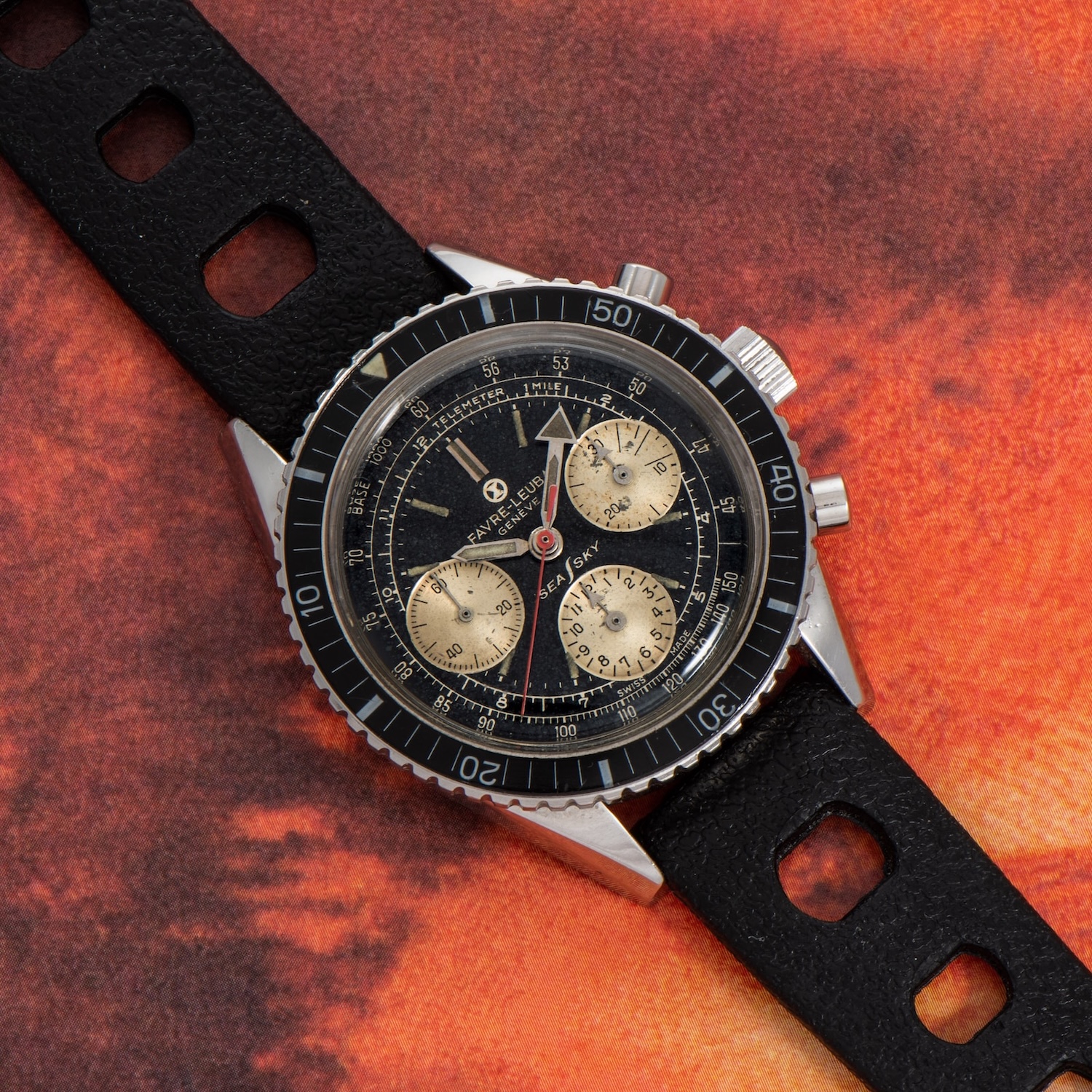
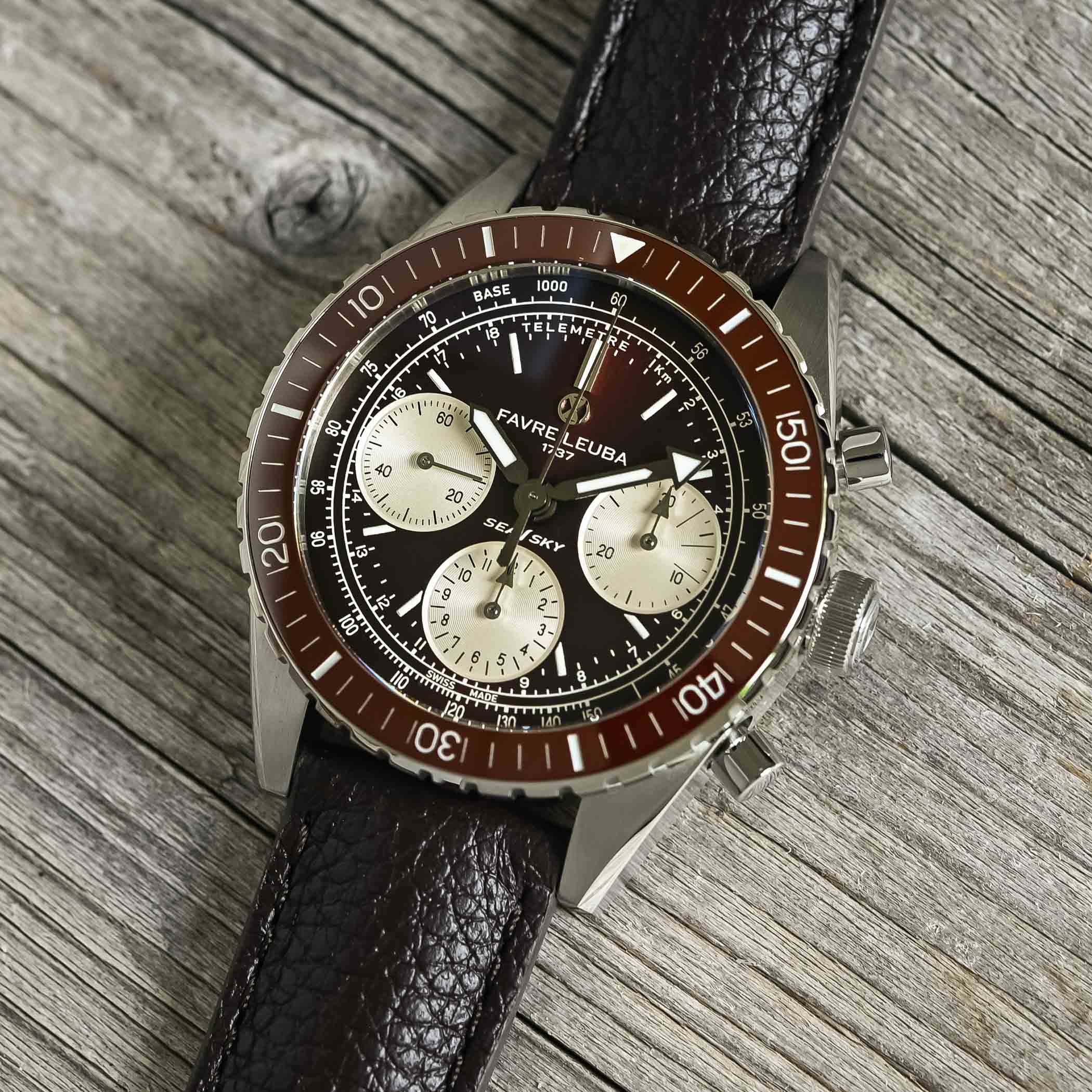
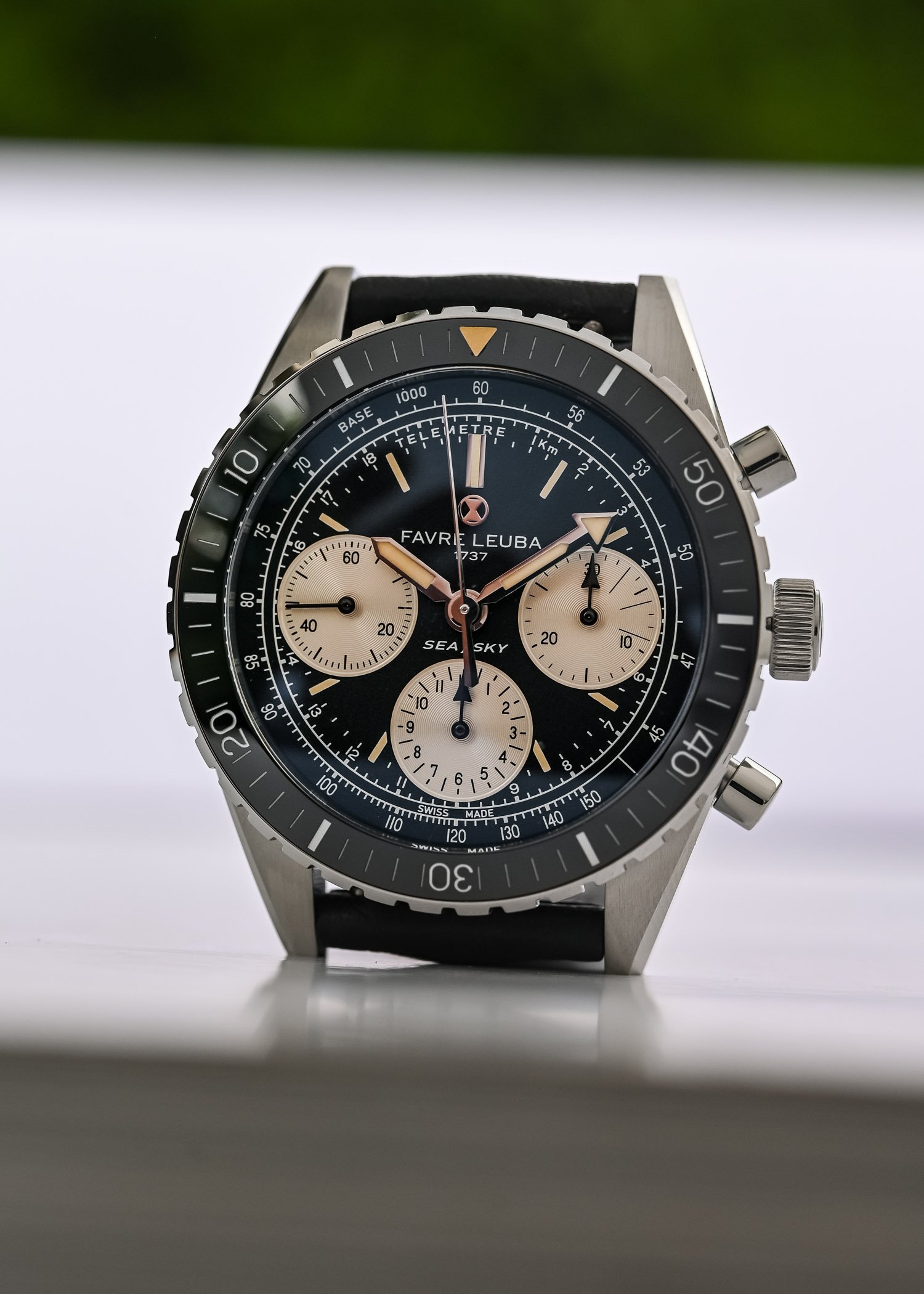
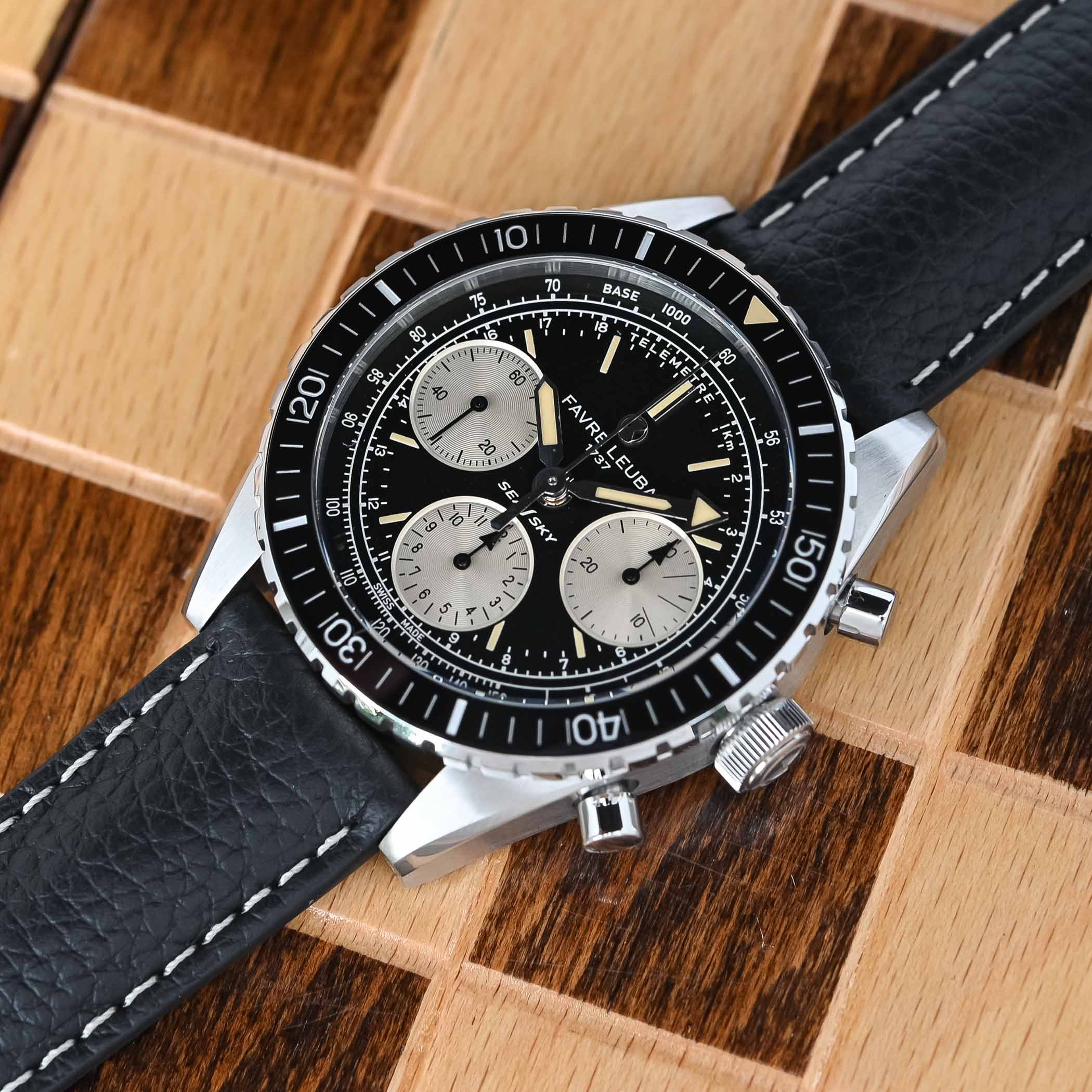
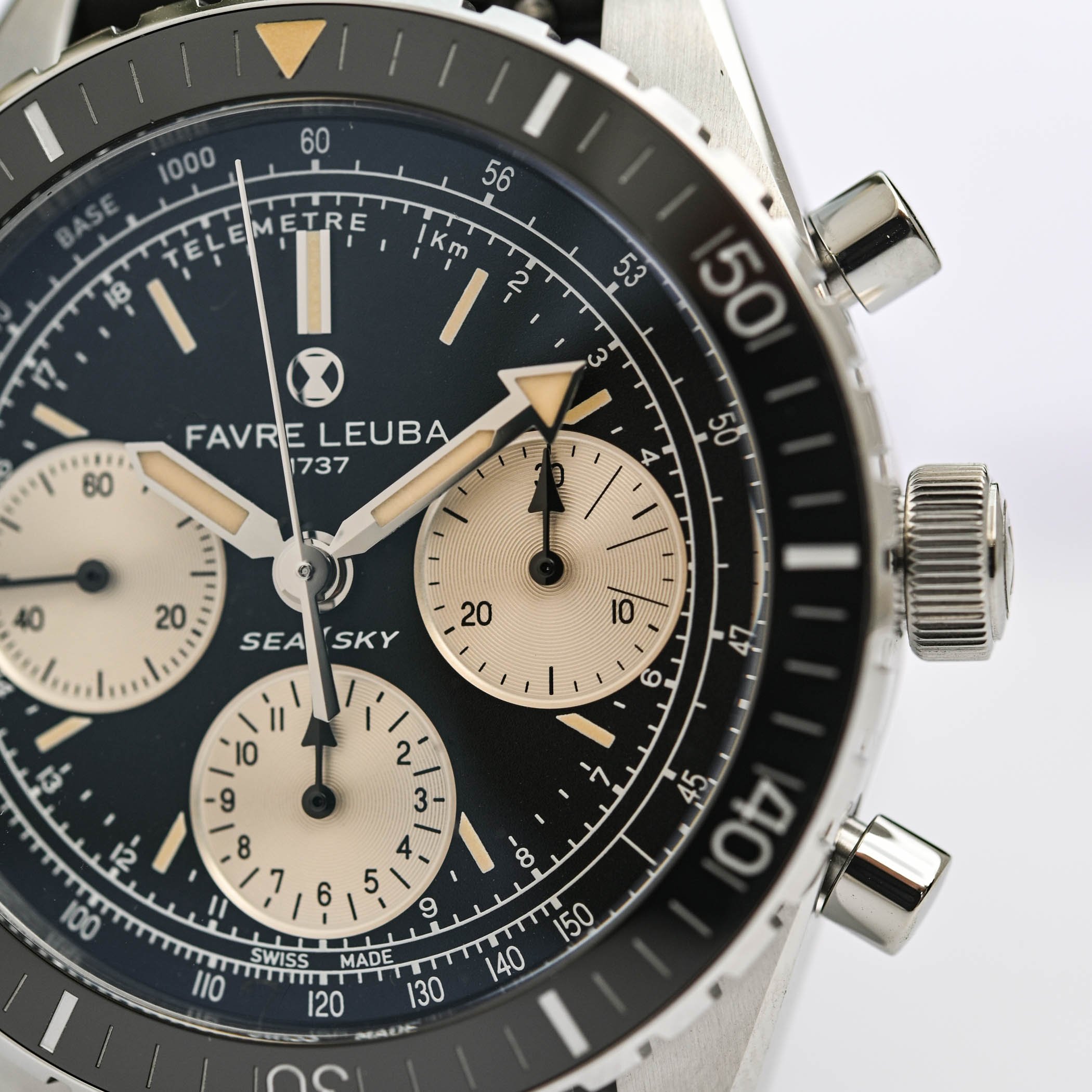
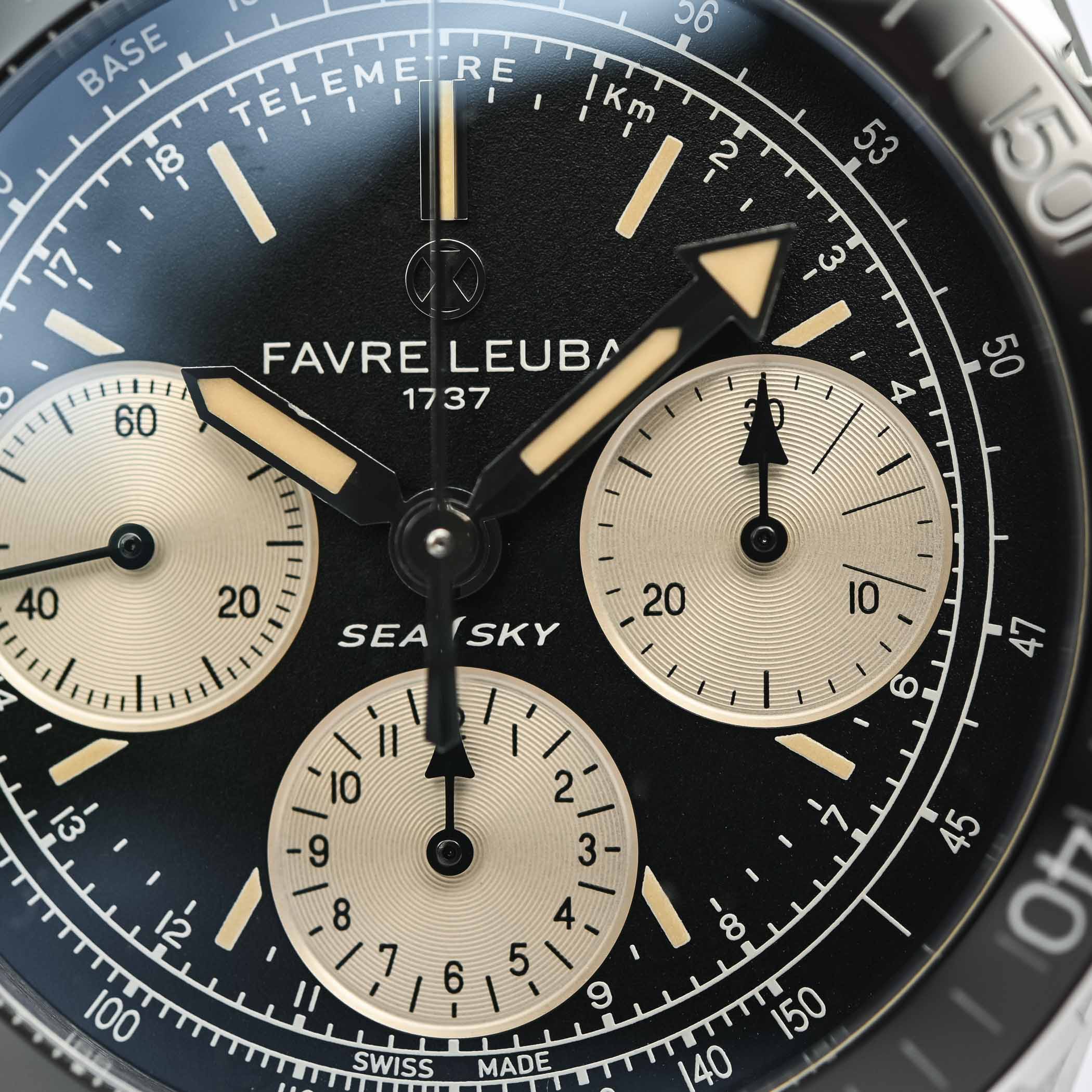
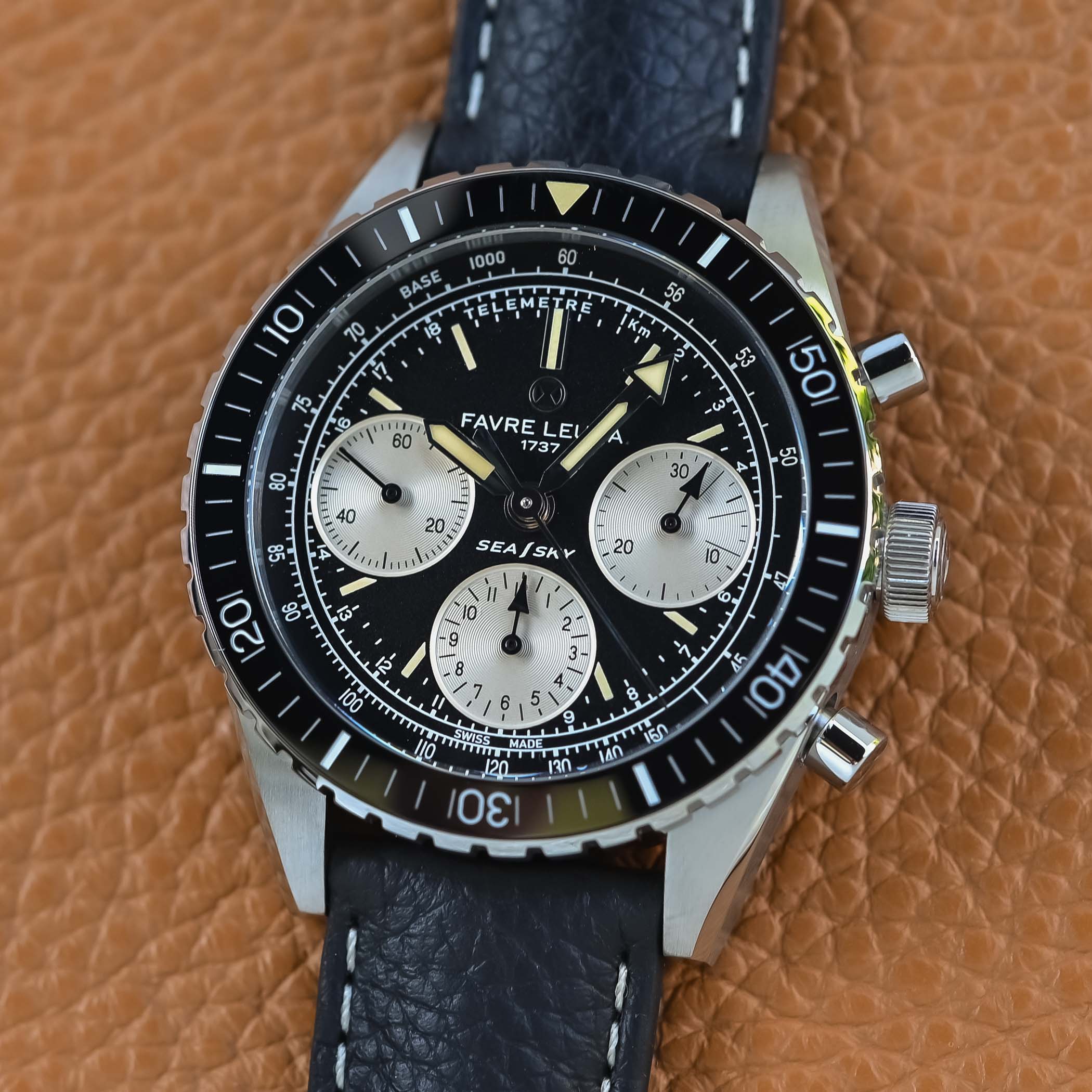
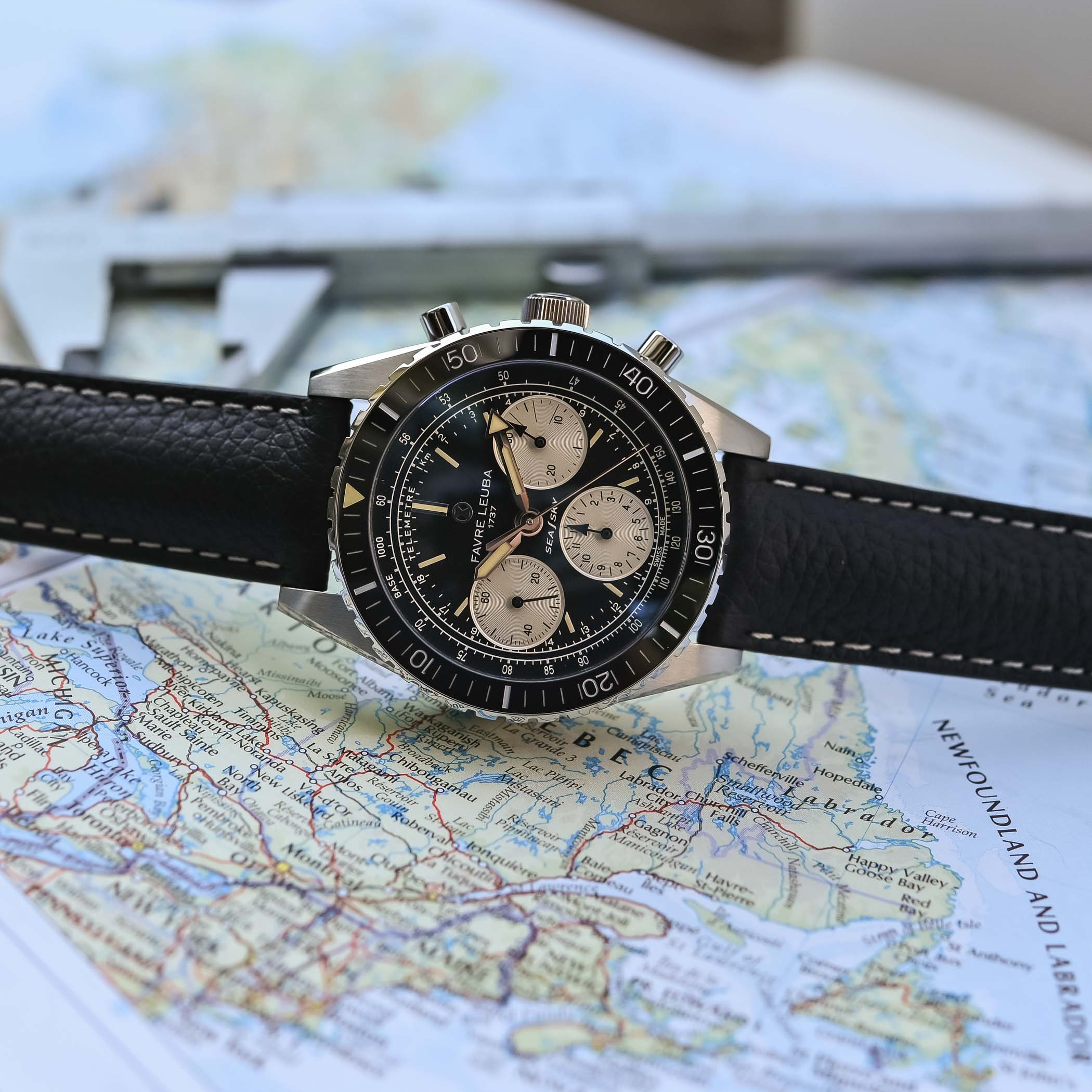
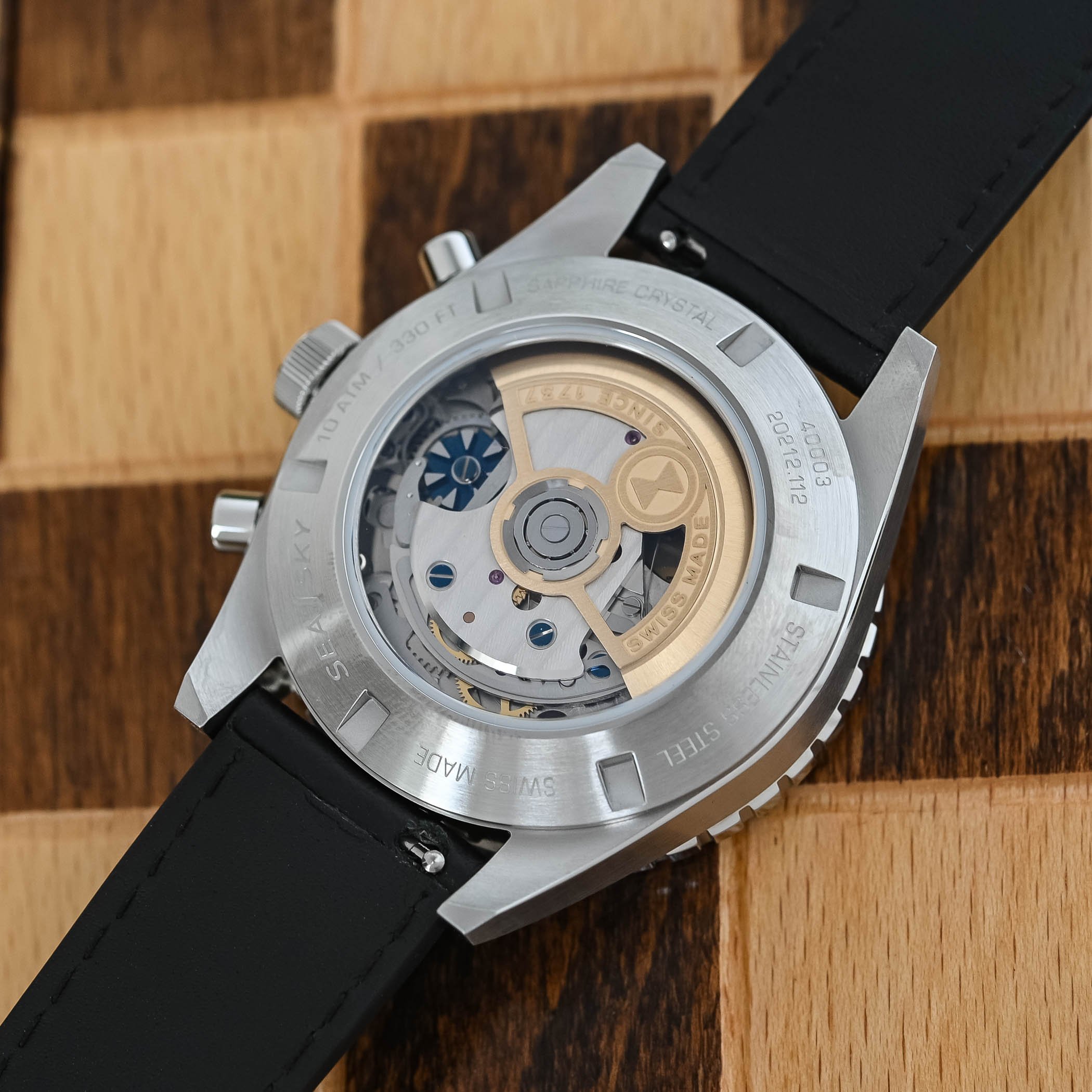

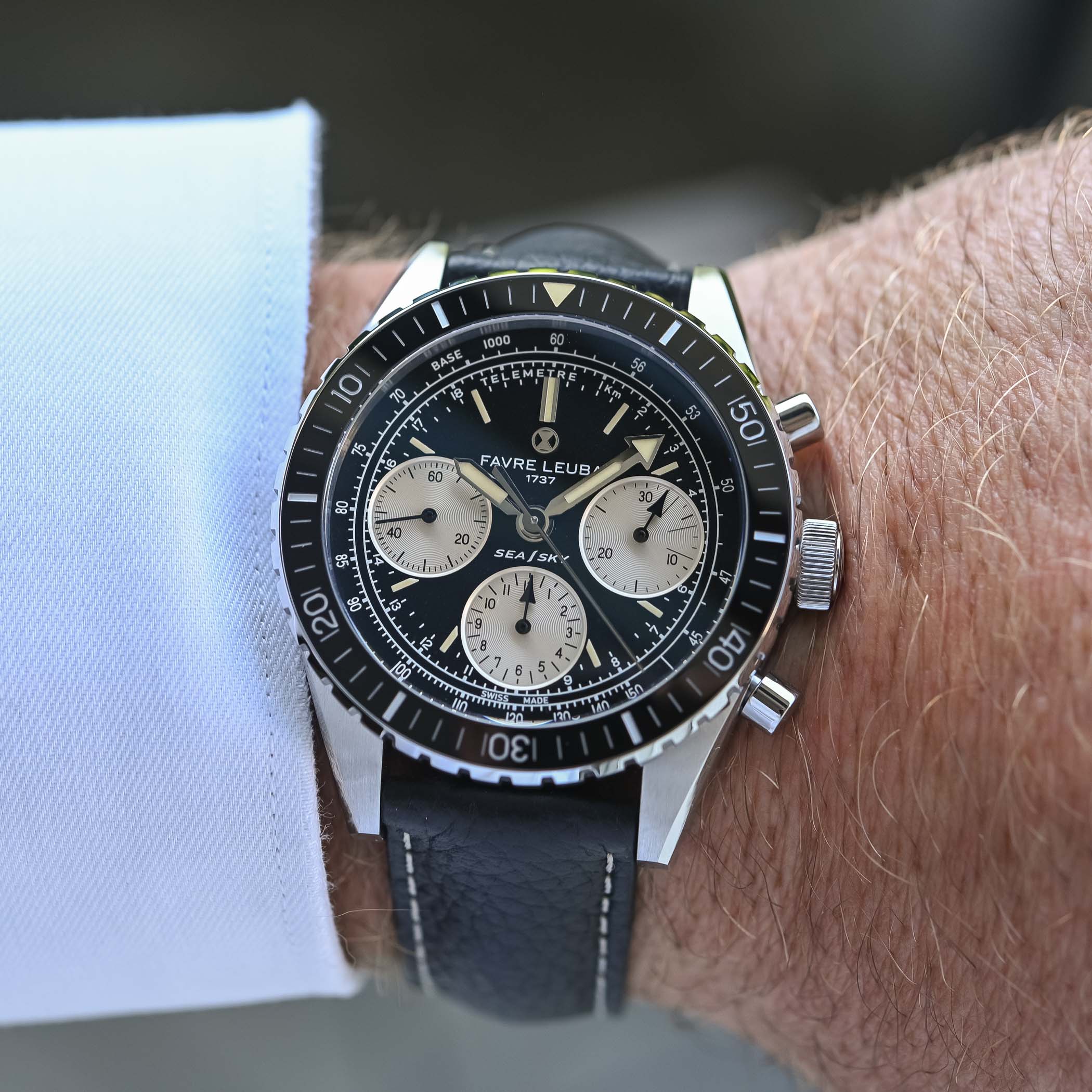
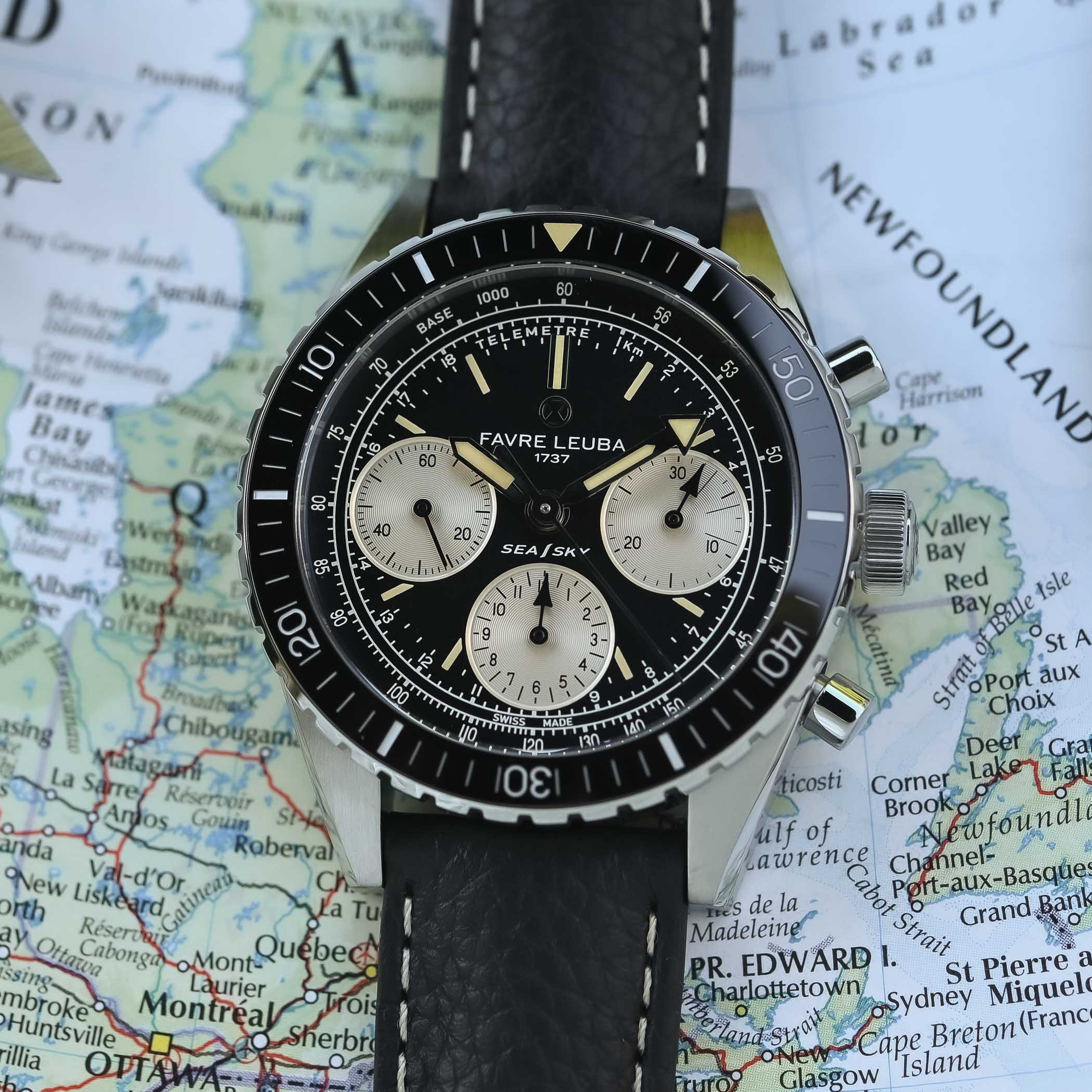



4 responses
“Relatively affordable”? At 3,000 euros, yes. At 4,600 euros, no. As the industry suckers us along.
At 3K and with a competitive height (<= 12mm) this would have been quite nice, it’s got a good looking dial.
As it is though, it’s another overpriced hockey puck.
I love dive watches and chronographs but while I have occasionally contemplated mixing the two reality yet has to catch up with my twisted brain. Doxa CGraph (the 2 in particular), the TGraph, BP FF, Aquastar, Panerai generally suffer from the usual chunkiness. My favorite of all remains the JLC deepsea vintage in any of its iterations, that my friend is the ultimate gentleman diver (sic) chronograph!
shave off 1,5mm in thickness and 1,5k in price, and this is my next purchase. love everything else about it